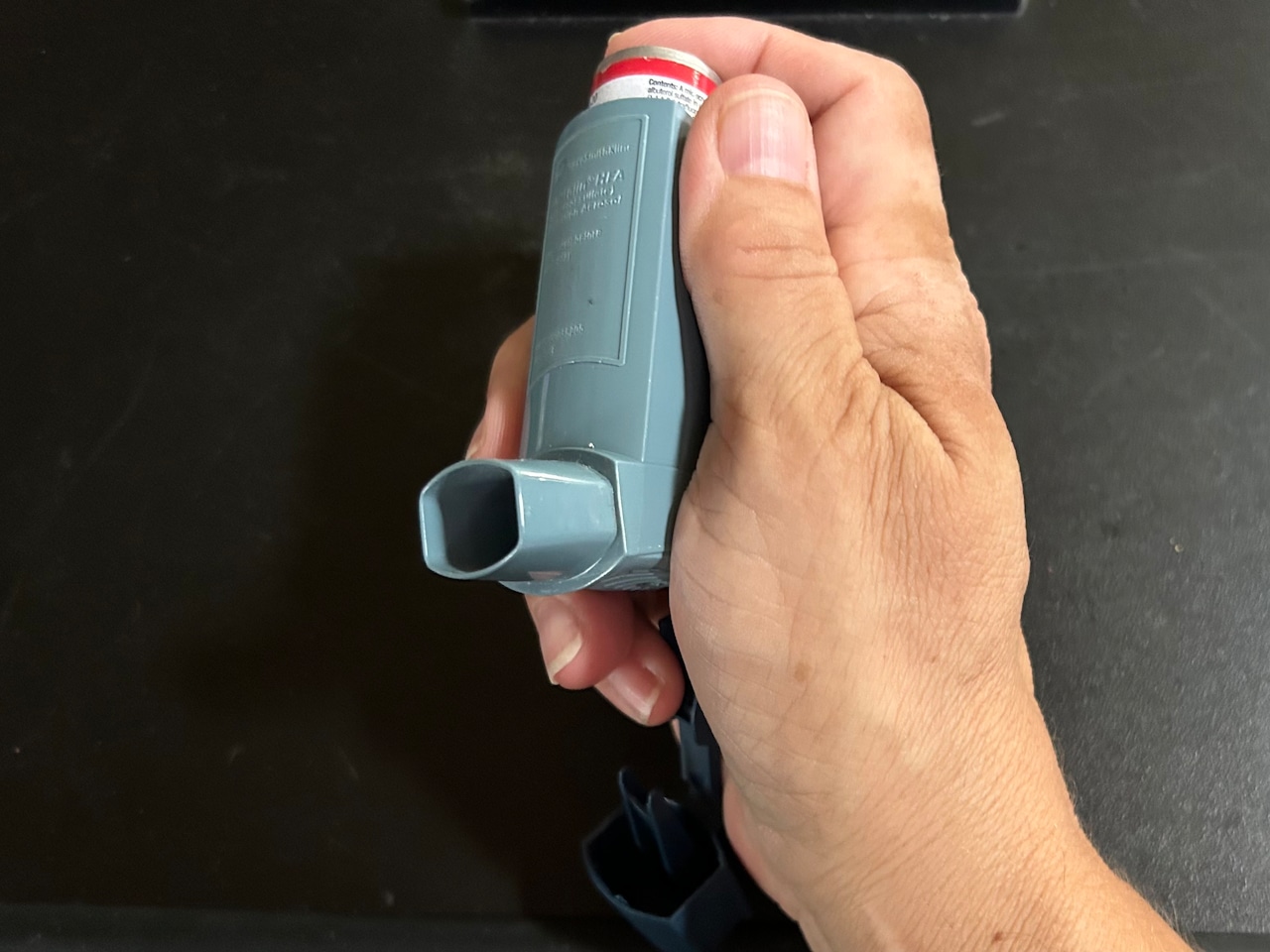
The situation is an ironic one.
While climate change is worsening respiratory illnesses — by increasing extreme heat, spreading smoke from wildfires, and lowering air quality — one of the most common devices used to treat them is also expelling significant amounts of greenhouse gases into the environment, further contributing to climate change.
The culprit in this feedback loop is the metered-dose inhaler, most often prescribed to treat asthma and chronic obstructive pulmonary disease. It sends medication into the lungs using hydrofluorocarbon aerosol propellants — which are greenhouse gases between 1,000 and 3,000 times more potent than carbon dioxide in terms of trapping heat, according to Dr. Gregg Furie, medical director for climate and sustainability at Brigham and Women’s Hospital in Boston.
“Climate change is itself a major problem for people with respiratory disease,” Furie said. “And then paradoxically … meter-dose inhalers are themselves a substantial contributor to the climate crisis.”
The emissions from all of the metered-dose inhalers sold in the U.S. — about 144 million in 2020 — are equivalent to emissions from roughly 500,000 cars driven for a year.
Word of the negative environmental effects of these common medical devices is beginning to spread to health care professionals who prescribe them, but it’s still not common knowledge.
And getting patients to consider alternatives — usually more expensive ones — is a mounting challenge.
In 2019, the United Kingdom’ National Health Service, the largest health care system in the world, conducted an inventory of its total greenhouse gas emissions across all aspects of operations and found that metered-dose inhalers represented about 4%, roughly equivalent to the same emissions produced by its electricity consumption.
Asthma is a major issue Massachusetts
Though Furie couldn’t speculate on the local effect of metered-dose inhalers in Massachusetts, asthma is an important issue in the state.
Massachusetts has an elevated rate of asthma compared to the national rate, according to state environmental public health tracking: approximately one out of every 11 Bay Staters currently has asthma.
In 2020, the most recent state data available, there were 2,494 cases of hospital admissions and 19,199 cases of emergency room department visits as a result of asthma.
The year before, in 2019, prior to the COVID pandemic, those numbers were significantly higher: 4,771 hospital admissions and 34,652 emergency room visits.
And a 2023 report done by the Boston Public Health Commission, highlighting racial inequities in those impacted by asthma, showed approximately 30% of Boston Public Schools students reported having asthma in 2021, and the percentage was higher for Latinx, Asian and Black students than white students.
Furie noted allergy season in Massachusetts is increasing in length and severity as a result of climate change. While not all people with allergies have asthma, symptoms can be triggered by allergies, he said.
“As a consequence of increased CO2 concentration, plants are actually producing more pollen, and so we’re seeing increased severity of people’s allergies,” he said.
The medical profession has a long way to go in terms of recognizing the climate impacts of metered-dose inhalers, Furie said. He called it “an invisible subject,” though more doctors are starting to pay attention.
Are there solutions?
The medical profession has been through a similar challenge before.
Prior to the current generation of metered-dose inhalers, inhalers used propellants called chlorofluorocarbons — the materials that famously contributed to punching a hole in the ozone layer.
Those were phased out between the 1990s and early 2000s and the new propellants were introduced, along with a spike in prices.
There are alternatives in this situation, too, but ever present are challenges with cost and availability.
One example is dry powder inhalers, which are used in other countries at far higher rates than metered-dose inhalers, particularly in the United Kingdom. In Sweden, for example, the country has largely replaced metered-dose inhalers with dry-powder inhalers.
The U.S. has always gravitated culturally towards metered-dose inhalers, resulting in fewer available generic versions of the alternatives and in turn, affordability issues, Furie said.
In December, the U.S. Food and Drug Administration announced it had awarded a contract for a study intended to address the challenges of developing a metered-dose inhaler with “low global warming potential.”
The Symbicort Turbohaler 200/6, manufactured by AstraZeneca, is the “ideal inhaler” in terms of efficacy, affordability and the environment, Furie said. But it isn’t currently available in the U.S.
“There are better alternatives out there,” he said. “The challenge is kind of making them affordable and accessible to patients in the United States.”






